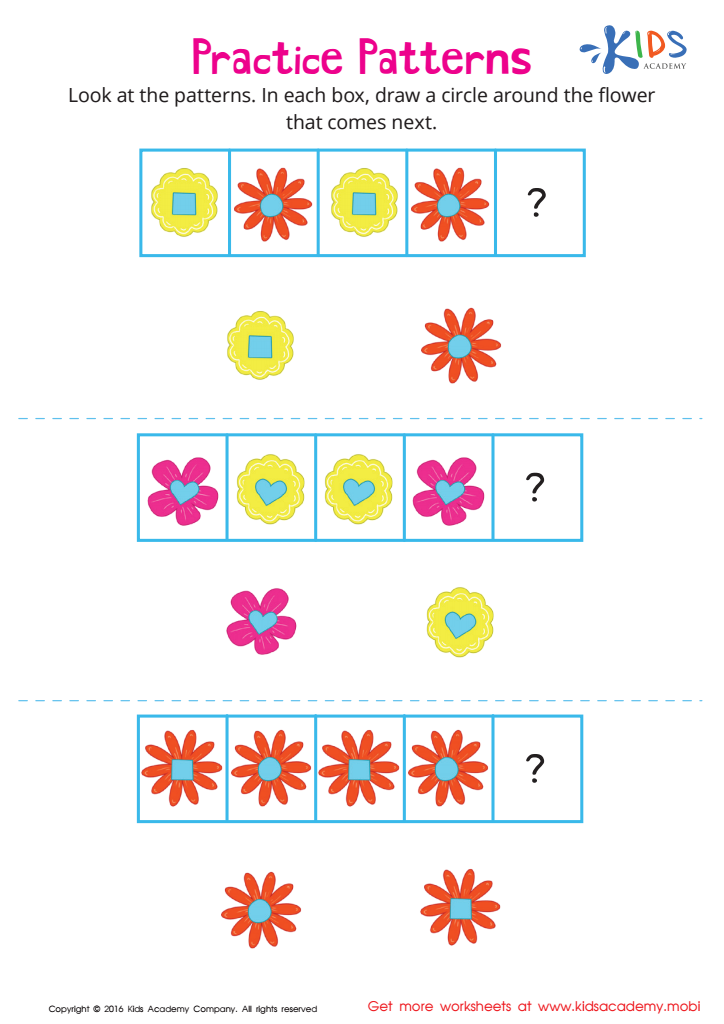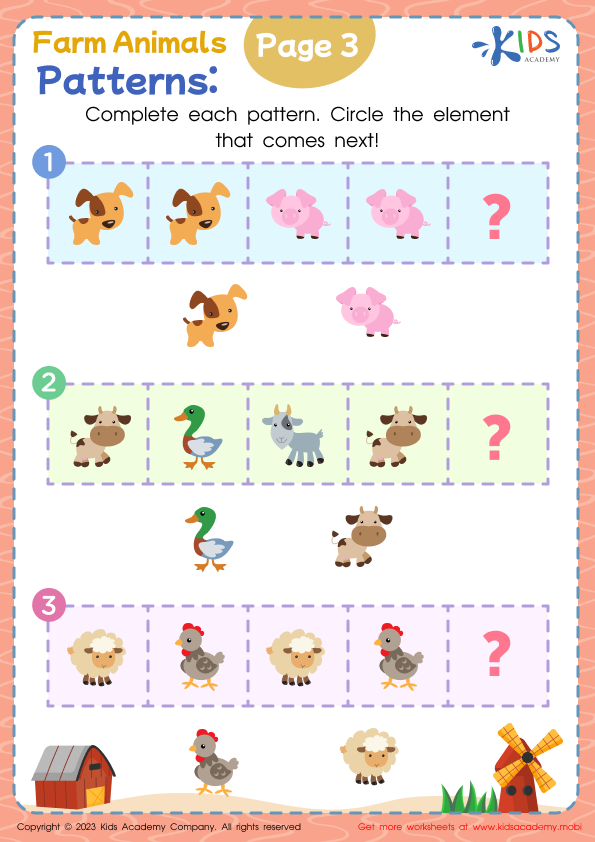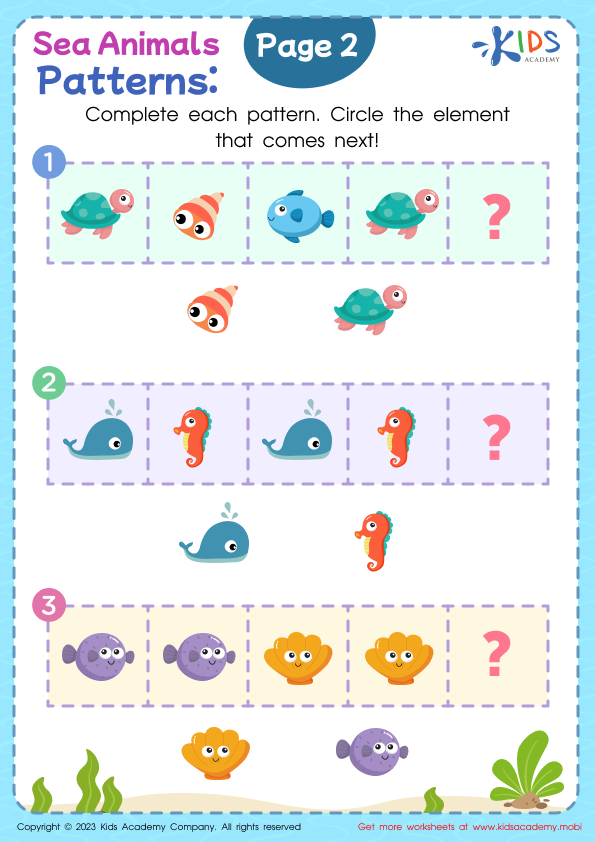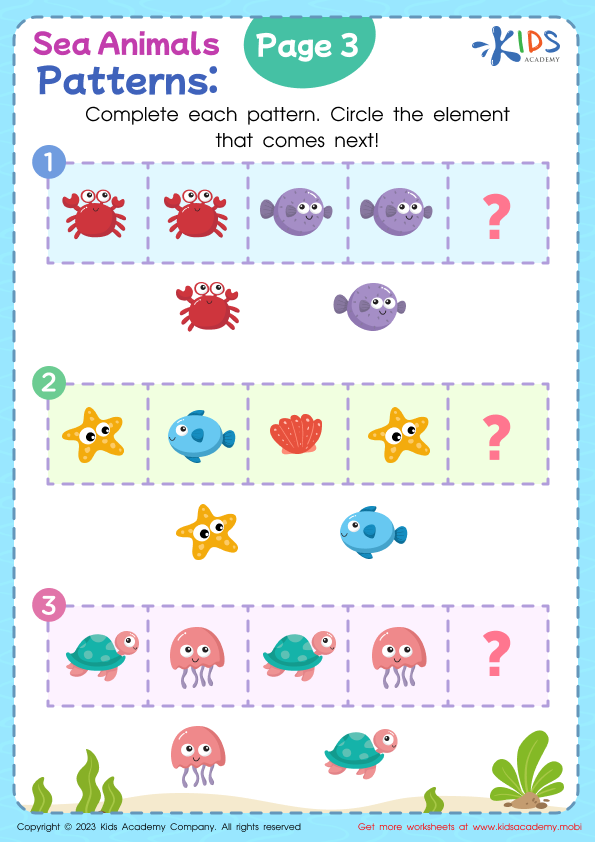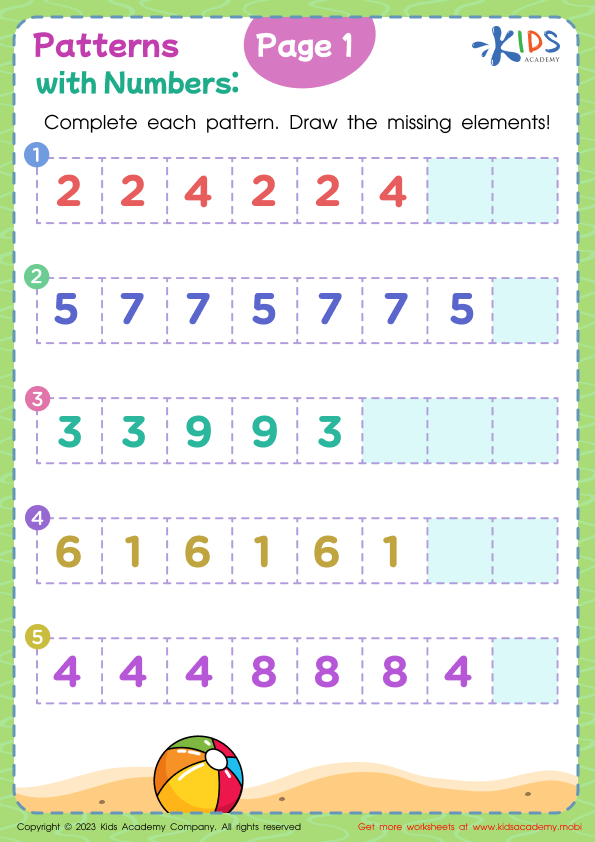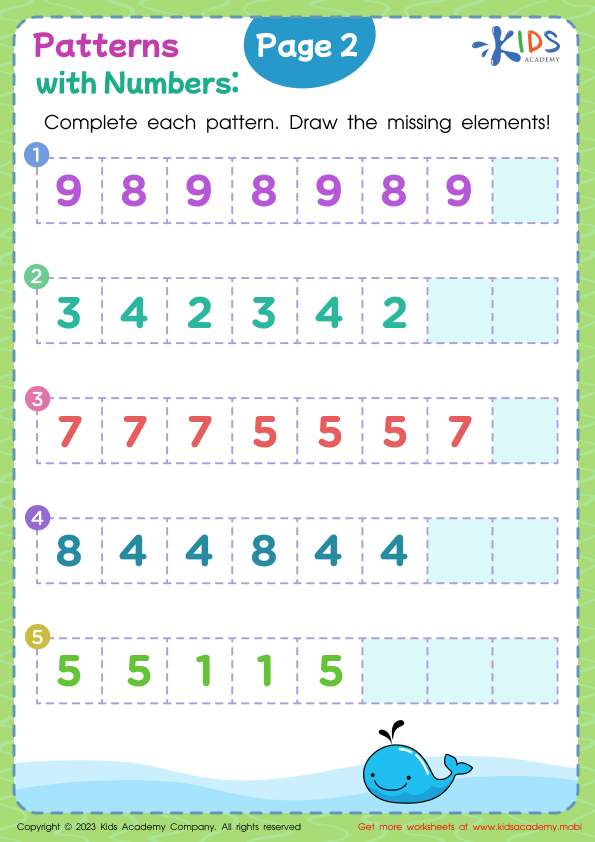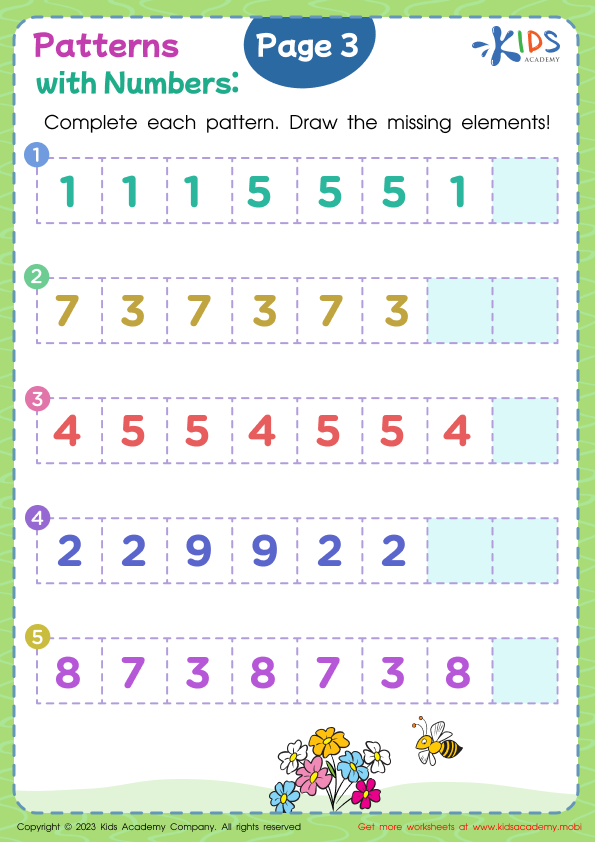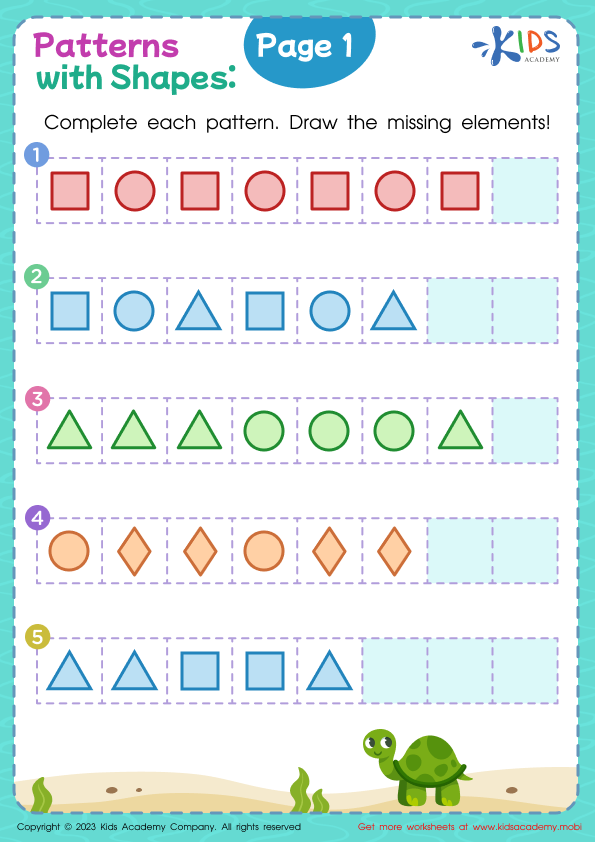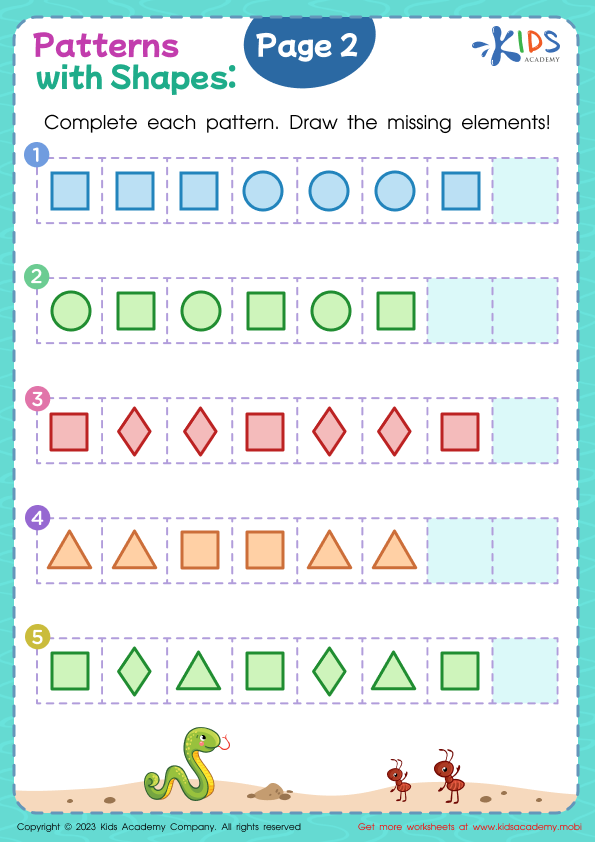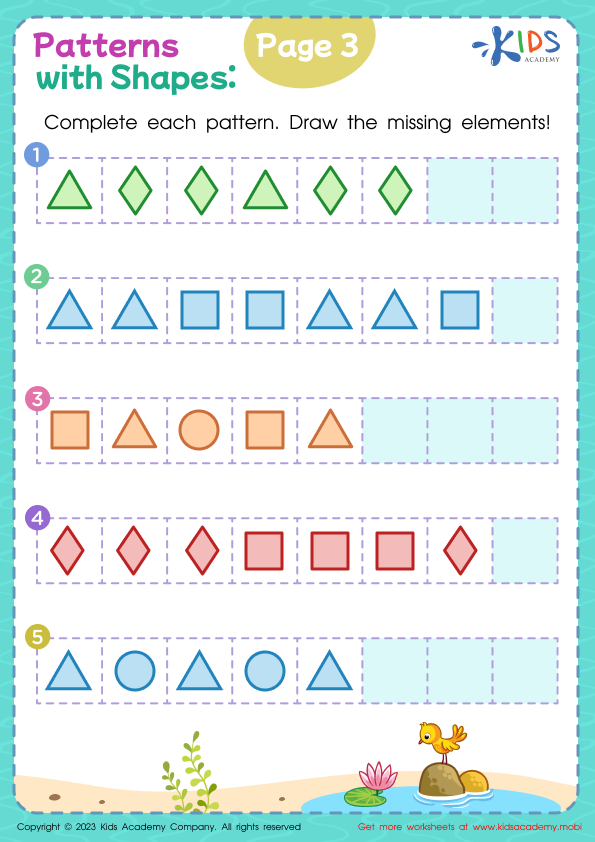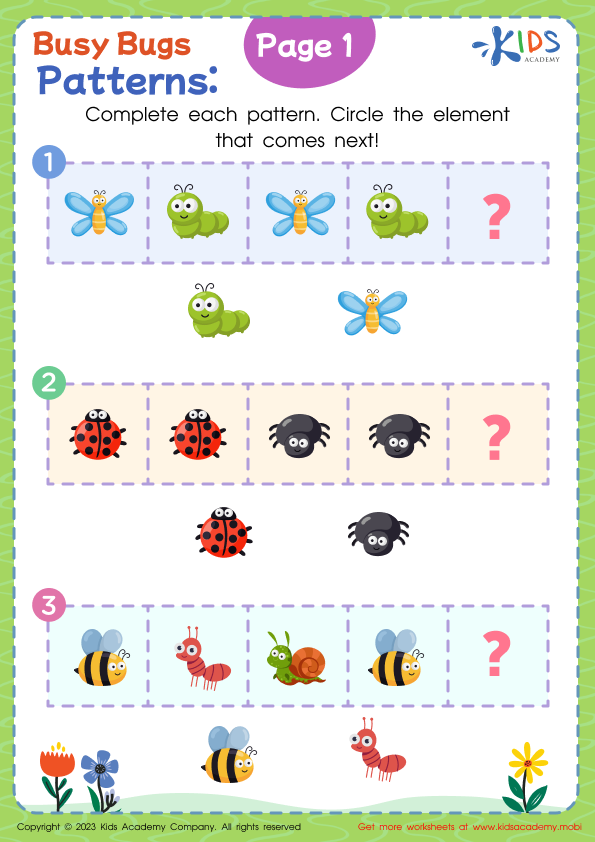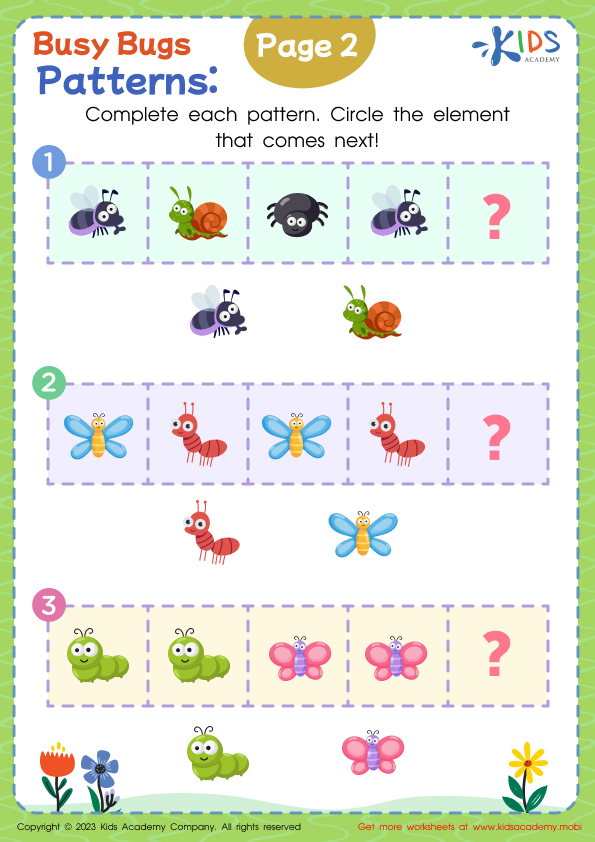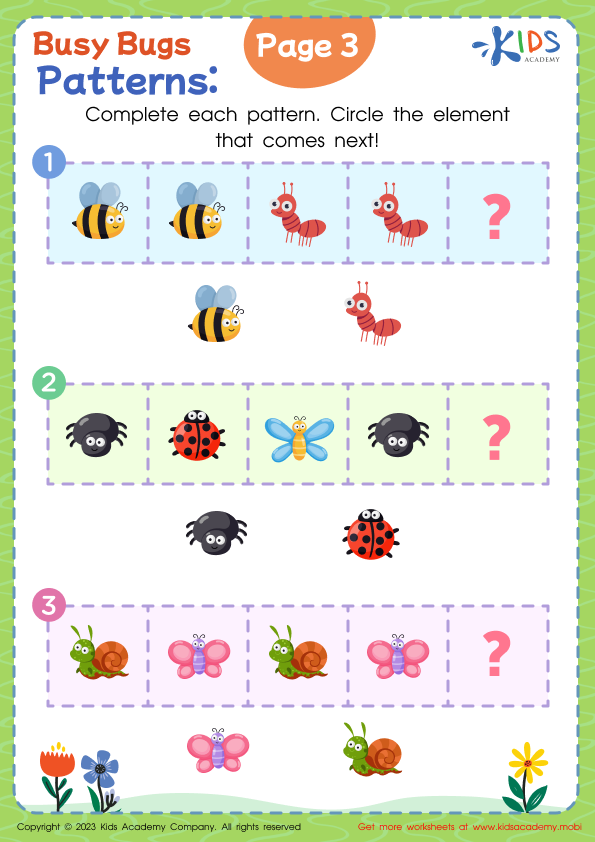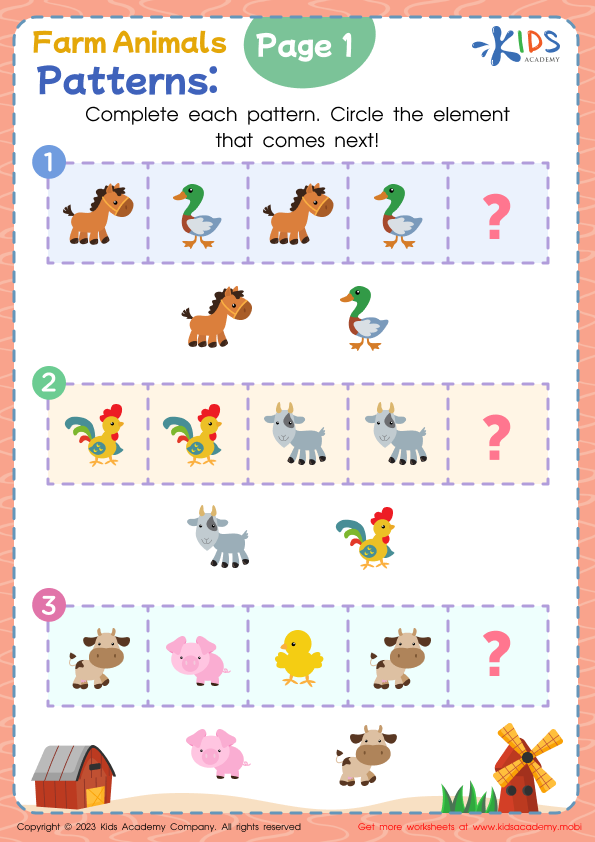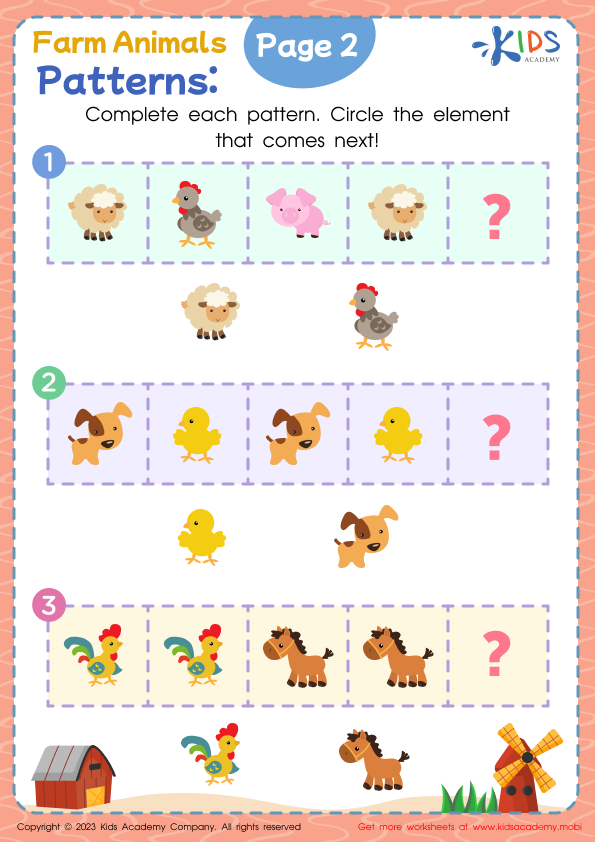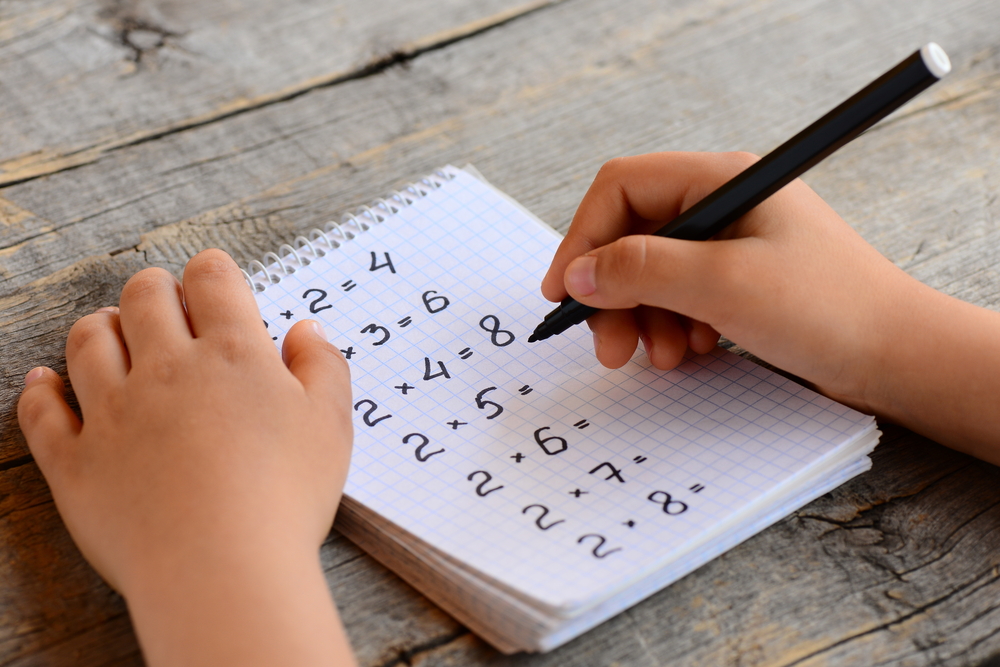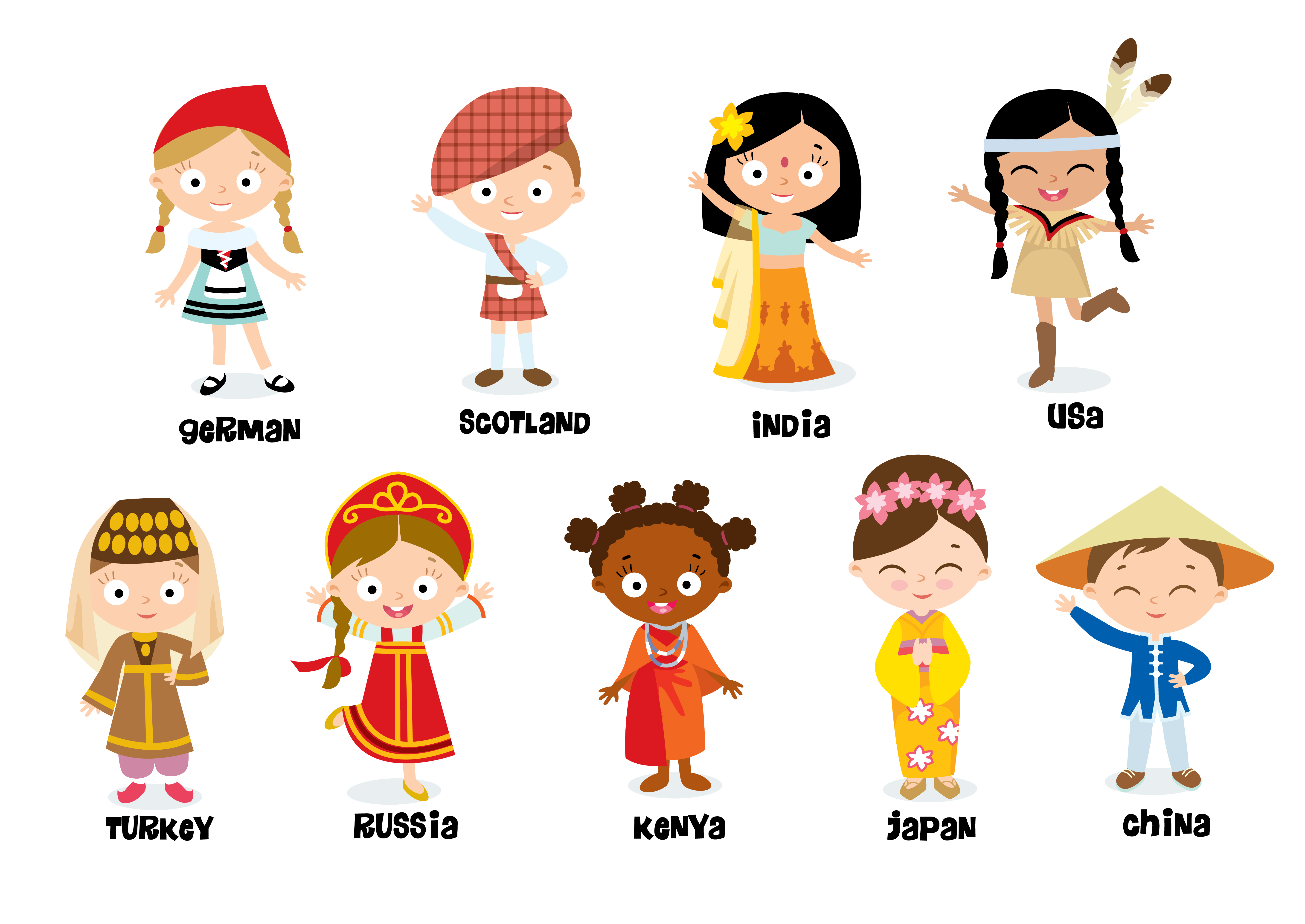Patterns Worksheets for Ages 5-8
21 filtered results
-
From - To
Discover our engaging Patterns Worksheets designed for children ages 5-8, perfect for nurturing essential math skills. Our carefully crafted printable resources introduce young learners to the exciting world of patterns, encouraging them to recognize and create sequences using shapes, colors, and numbers. These interactive worksheets not only promote critical thinking and problem-solving abilities but also enhance fine motor skills through tracing and coloring activities. Designed to align with early learning standards, our materials make math fun and accessible. Unlock your child's potential and build a strong foundation in math with our delightful Patterns Worksheets today!
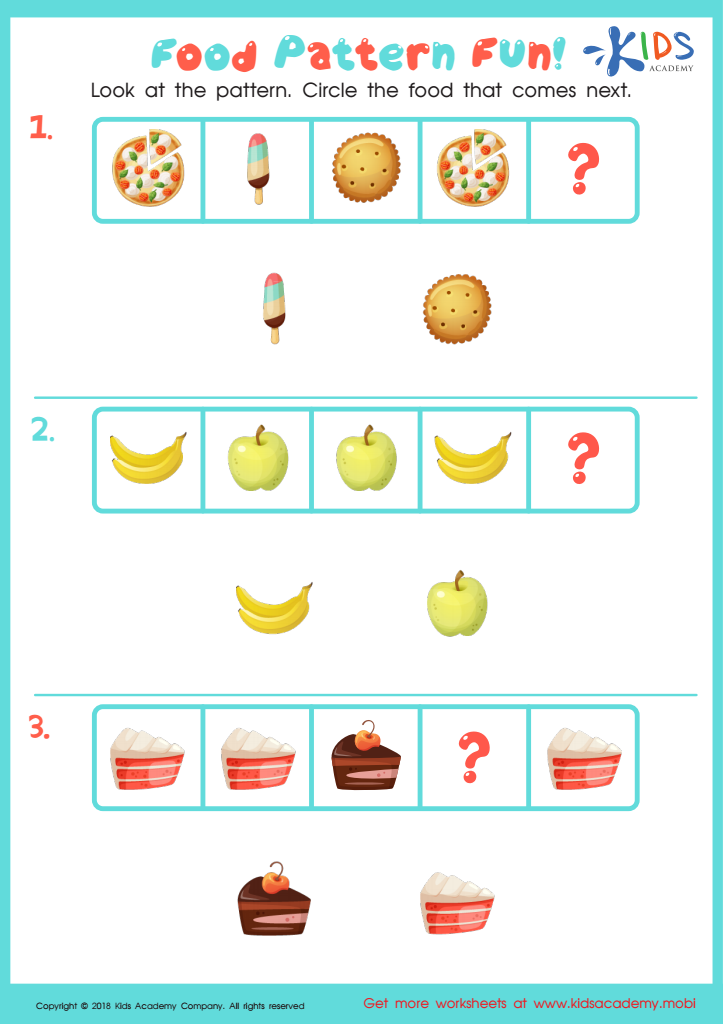

Food Pattern Fun Worksheet
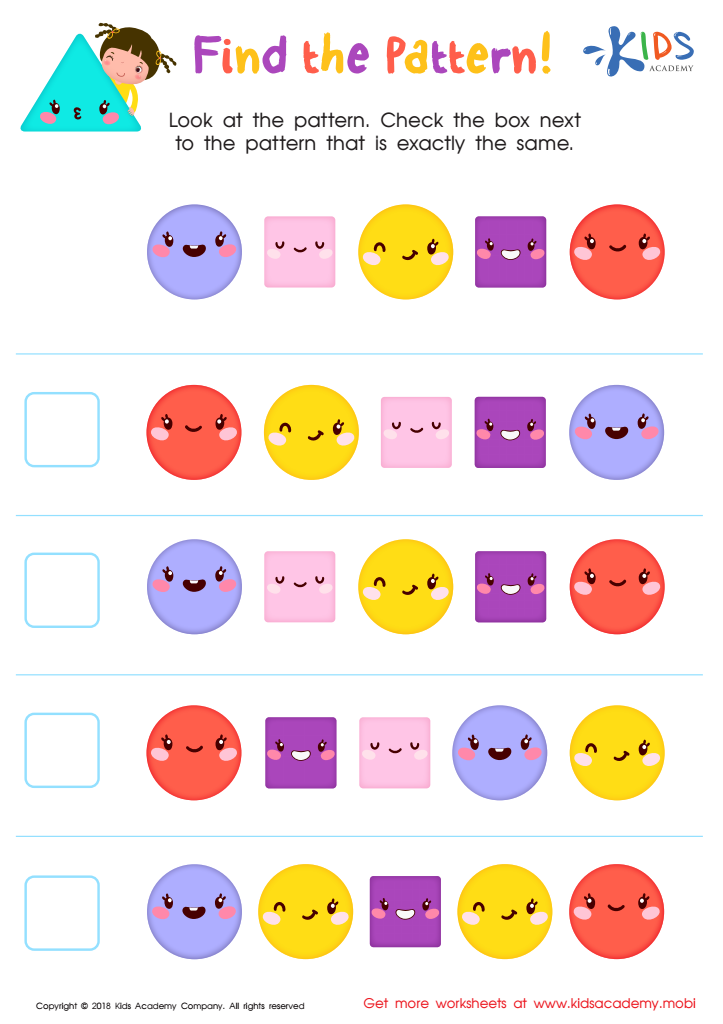

Find the Pattern Worksheet
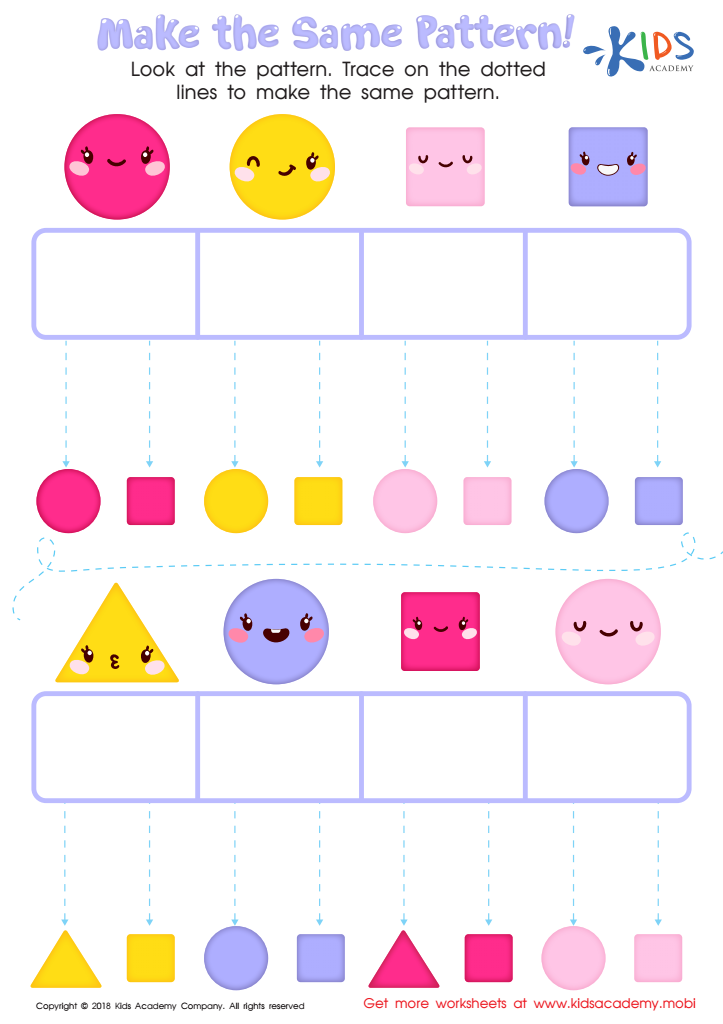

Make the Same Pattern Worksheet
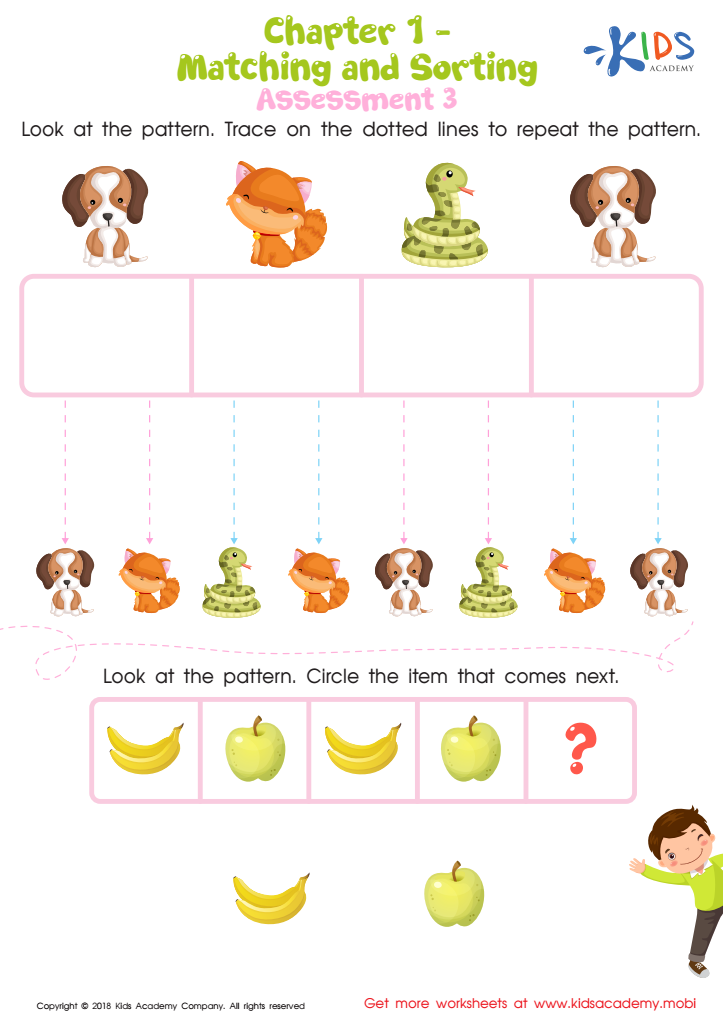

Matching and Sorting for Preschool: Assessment 3 Worksheet
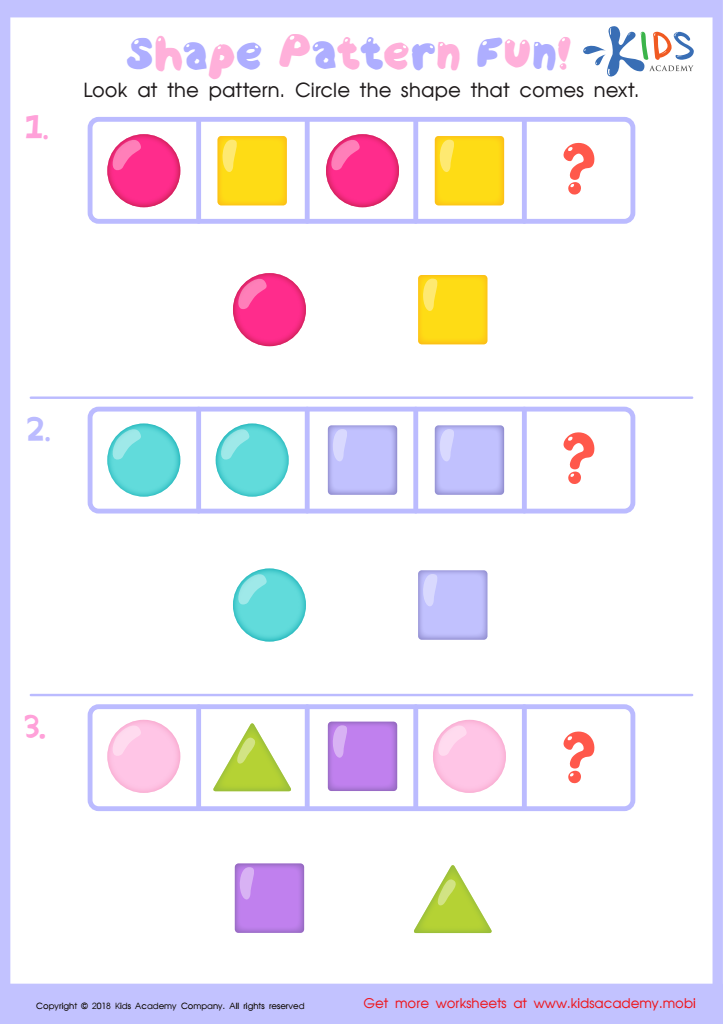

Shape Pattern Fun Worksheet
Patterns are a fundamental concept that helps shape young children's understanding of the world around them. For children aged 5-8, engaging with patterns fosters critical skills such as problem-solving, logical thinking, and observational abilities. When parents and teachers focus on patterns, they are not just teaching math concepts; they are laying the groundwork for future learning. Recognizing, creating, and extending patterns enhances cognitive development and enriches a child's analytical skills.
Moreover, patterns are prevalent in everyday life—whether in nature, art, music, or routines. Helping children identify and appreciate these patterns can connect learning to real-world scenarios, making educational experiences both fun and relatable. By cultivating an interest in patterns, parents and teachers can enhance children's creativity and empower them to appreciate the beauty of symmetry and order.
Additionally, pattern recognition is critical in various academic disciplines, including mathematics, science, and language arts. A strong foundation in this skill set aids children as they progress through their education, preparing them for more complex concepts later on. Ultimately, a focus on patterns not only supports academic success but also nurtures a lifelong love for learning. Therefore, adults should embrace the significance of patterns in a child's early development.

 Assign to My Students
Assign to My Students
